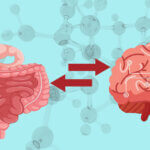Overview of Exercise for Movement Disorder
Exercise for movement disorders is essential for managing movement disorders. It includes activities that improve movement and overall well-being. Different exercises like aerobics, strength training, and balance activities make daily tasks easier. Tailored programs for specific conditions, such as Parkinson’s or multiple sclerosis, target unique symptoms. Working together with doctors and fitness experts is crucial for effective plans. Ultimately, exercise significantly improves the quality of life for those with movement disorders.
The Role of Exercise in Movement Disorders Management
Exercise plays a pivotal role in managing movement disorders by enhancing mobility, coordination, and overall physical well-being.It doesn’t just boost physical abilities but also improves how well we move and coordinate. Tailored exercises are like personalized superheroes, each one tackling different problems. From aerobic activities to muscle-building exercises and balance training, each type helps in its unique way. When these exercises are part of a full treatment plan, they make living with movement disorders easier and bring hope for better movement in the future.
Benefits of Exercise in Movement Disorder Management
The exercise benefits of movement disorder management are vast. It improves coordination and movement as if it were a unique medication. Tailored exercises act like a custom-made solution, tackling different challenges. They improve mobility, balance, strength, and flexibility, making everyday life easier for people with movement disorders. It’s not just about the body; exercise also cheers up the mind, reducing stress and lifting mood, making life better overall.
Types of Exercises Beneficial for Movement Disorders
Tailored exercise programs for movement disorders offer great help for movement disorders. There are several varieties, each with a distinct function. Aerobic activities, like walking or swimming, boost overall endurance. Strength training, involving weights or resistance, builds muscle strength. Balance and flexibility exercises, such as yoga or specific stretches, enhance stability and flexibility. Each type targets different aspects of movement disorders, contributing uniquely to improve daily life and movement.
Aerobic Activities
Aerobic activities are like a vitality boost for the body. They get your heart pumping and enhance overall endurance. Whether it’s walking, cycling, or swimming, these activities significantly improve cardiovascular health and contribute to better movement and reduced symptoms for those with movement disorders.
Strength Training
Strength training involves exercises that build muscle strength, like weightlifting or resistance workouts. It enhances bone density, muscle tone, and general wellness. By using resistance, such as weights or body-weight, muscles are challenged, leading to growth and increased strength. Consistent strength training enhances metabolism, promotes better posture, and aids in injury prevention. It’s important to start with proper form and gradually increase intensity in Cardiovascular exercise for movement disorders for safety and effectiveness.
Balance and Flexibility Exercises
Use Flexibility and equilibrium for mobility in movement disorders. Your body moves more smoothly, stays more steady, and is less likely to get injured with the help of stretches and yoga.They improve how you stand, move, and prevent injuries. These exercises can be easy or more challenging, and they make it easier to do things every day without getting hurt.
Exercise Programs Tailored to Specific Movement Disorders
The doctors at our movement disorder clinic in Mumbai suggest special exercise programs are made for people with conditions like Parkinson’s or multiple sclerosis. These exercises are tailored to address the unique problems associated with each disease to improve strength, balance, and mobility. They’re created by experts, like physiotherapists, to suit each person’s needs and abilities. These exercises can make daily life better, manage symptoms, and sometimes even slow down how fast the condition gets worse.
Parkinson’s Disease
Parkinson’s disease is a neurodegenerative condition affecting movement. It involves symptoms like tremors, stiffness, and difficulty with balance and coordination. This condition occurs due to a decrease in dopamine production in the brain. While there’s no cure, treatments focus on managing symptoms through medication, therapy, and sometimes surgery. Exercise for Parkinson’s disease, physical therapy, and a supportive environment play a crucial role in enhancing quality of life for individuals with Parkinson’s.
Multiple Sclerosis
The disease known as multiple sclerosis (MS) damages the nerve system. It causes various symptoms like fatigue, trouble with coordination, and sometimes numbness or weakness in different body parts. MS results from an immune system attack on the nerve fibres’ protective sheath. While there’s no cure, treatments aim to manage symptoms and slow down the progression of the disease. Medications, therapy, and exercise for multiple sclerosis help individuals cope with MS and maintain their quality of life.
Essential Tremor
Exercise for essential tremor is a nervous system disorder causing involuntary shaking, commonly in the hands, head, or voice. Unlike Parkinson’s, it’s not typically linked to other health issues. The exact cause isn’t fully understood, but it can run in families. Essential tremor isn’t life-threatening, but it can impact daily tasks. Treatments include medication, lifestyle adjustments, and in some cases, therapies like physical or occupational therapy to manage the tremors.
Dystonia
Dystonia is a movement disorder that causes muscles to contract involuntarily, leading to twisting or repetitive movements or abnormal postures. It can affect one muscle or a group of muscles and may be triggered by different factors, including genetics or injury. Dystonia can impact various body parts and functions, making daily activities challenging. Treatments involve medication, exercise for dystonia, and sometimes surgery to manage symptoms and improve quality of life.
Build strength safely with resistance training for dystonia. Explore our blog post: Resistance Training for Dystonia: Building Strength Safely
Exercise as Part of a Comprehensive Treatment Plan
Exercise plays a crucial role in a comprehensive treatment plan for various conditions. It contributes to overall wellness by improving strength, flexibility, and balance. In conditions like Parkinson’s, MS, or dystonia, tailored exercises can alleviate symptoms and enhance quality of life. Exercise, combined with medication and therapies, supports mobility, reduces stiffness, and may slow the progression of certain conditions. It’s an integral part of managing these health issues and promoting physical and mental well-being.
Collaboration with Movement Disorders Doctors
Movement disorders doctors team up with other healthcare experts to help people with conditions like Parkinson’s or essential tremor. They work together to diagnose, treat, and manage these conditions, bringing their specialized knowledge. This teamwork involves different specialists, like therapists and neurologists, to create personalized treatment plans, including medication and therapy, to best help each person. Working together this way makes sure individuals get the best care for their condition.
Integrating Exercise with Medication and Therapy
Using exercise along with medication and therapy helps improve health.Treatment, medication, and exercise are all combined for illnesses such as MS and Parkinson’s disease.Exercise manages symptoms, medicine targets specific issues, and therapy gives guidance. Together, they make life better by improving movement and reducing symptoms. It’s like using different tools to make things better when dealing with health conditions.
A holistic approach to movement disorders like Parkinson’s, MS, essential tremor, and dystonia involves the integration of exercise, medication, therapy, and collaborative efforts among movement disorders doctors. This multifaceted strategy significantly impacts overall well-being by managing symptoms and enhancing the quality of life for those affected. By combining these diverse elements, a more comprehensive and effective approach is established, better addressing the challenges presented by movement disorders. This inclusive method aims to improve daily functioning, slow disease progression, and optimize the individual’s overall health and well-being.









